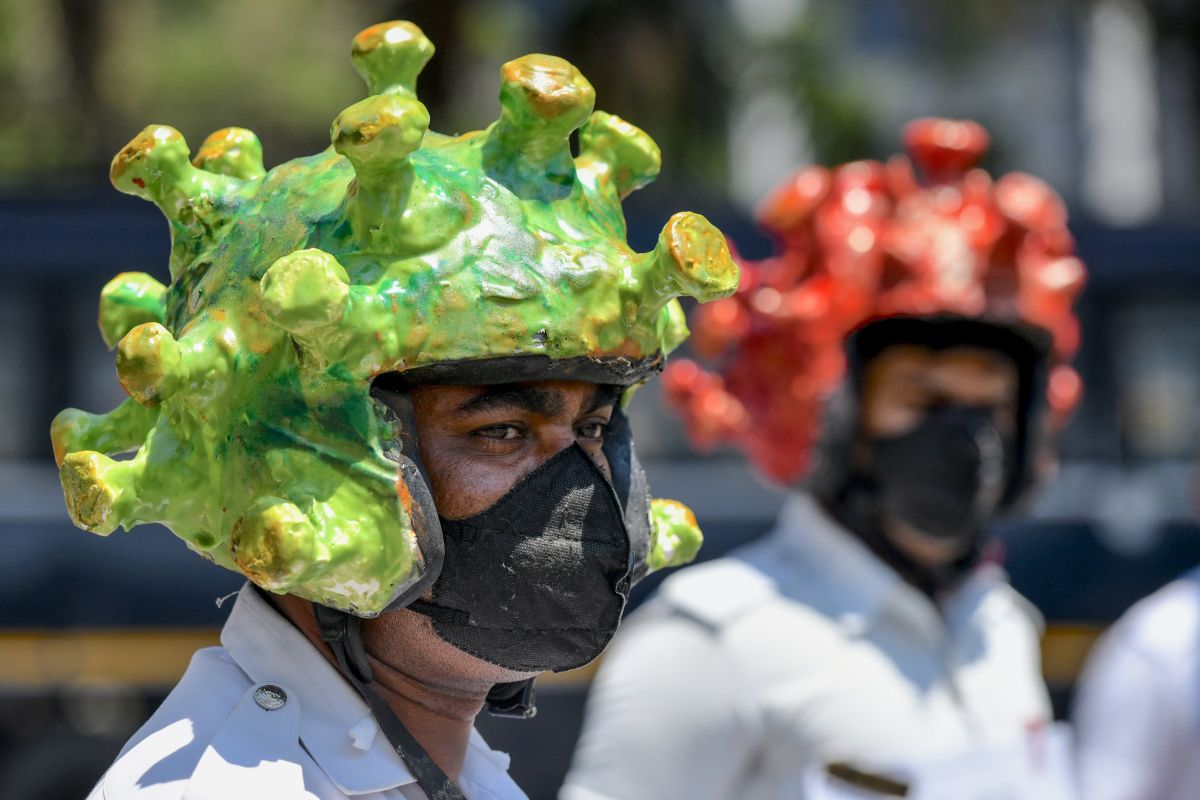Trump announces US withdrawal from World Health Organisation
Trump has long been critical of the WHO, and his administration formally withdrew from the organisation in July 2020 as the Covid-19 pandemic continued to spread.
Tamil Nadu, Gujarat, Delhi, Madhya Pradesh, West Bengal and Rajasthan account for 70 per cent of the active caseload, the Union health ministry said in a statement.

Traffic police personnel wearing coronavirus-themed helmet in Bangalore (Photo by Manjunath Kiran / AFP)
As coronavirus cases in India cross 1.31 lakhs, Union Health ministry has asked eleven municipal areas, that have accounted for 70 per cent of India’s infections, to ramp up their health infrastructure and ensure preparedness for the next two months to tackle the pandemic.
Tamil Nadu, Gujarat, Delhi, Madhya Pradesh, West Bengal and Rajasthan account for 70 per cent of the active caseload, the Union health ministry said in a statement.
Advertisement
The government has asked the eleven municipal areas to step up monitoring in old cities, urban slums and other high density pockets like camps and clusters for migrant workers for management of COVID-19 cases.
Advertisement
Union Health Secretary Preeti Sudan, who held a high-level meeting on Saturday through video conferencing with principal health secretaries and municipal commissioners along with other officials from the 11 municipal areas, urged them to focus on prevention through active screening of high risk and vulnerable population along with effective and sturdy clinical management of the admitted cases to reduce fatality rate.
COVID-19 cases in India saw the biggest spike for the third consecutive day today with 6,767 new infections reported in the last 24 hours, taking the nationwide tally to 1,31,868, while the death toll due to the disease rose to 3,867 after 147 more fatalities, the Union Health Ministry said.
The active cases of the coronavirus disease rose to 73,560. While 54,440 people have recovered, one patient has migrated to another country, according to the ministry bulletin.
“Thus, around 41.28 per cent patients have recovered so far,” a Health Ministry official said. During the meeting on Saturday, a presentation was made to highlight the trend in case trajectory with respect to total confirmed cases, case fatality rate, doubling time, tests per million and confirmation percentage, the ministry said.
“It was told that a major challenge lies in those corporations having shorter doubling time, higher mortality rate and a higher confirmation rate than the national average,” the ministry said in its statement.
The officials were briefed about the factors to be considered while mapping the containment and buffer zones and the activities mandated in containment zones like perimeter control, active search for cases through house to house surveillance, contact tracing, clinical management of the active cases.
They were also asked to undertake surveillance activities in the buffer zone like monitoring of Severe Acute Respiratory Infections (SARI) and Influenza Like Illness (ILI) cases and promoting social distancing and hand hygiene among others.
It was pointed out that testing needs to be stepped up in some municipal areas to ensure early detection of cases, timely clinical management and a reduction in fatality rate.
“They also need to be mindful of ramping up the health infrastructure to ensure preparedness for the next two months with special focus on isolation beds with oxygen, ventilators and ICU beds,” the health ministry statement said.
The officials were also urged to focus on prevention through active screening of high risk and vulnerable population and groups, and effective and sturdy clinical management of the admitted cases to reduce fatality rate.
Advertisement